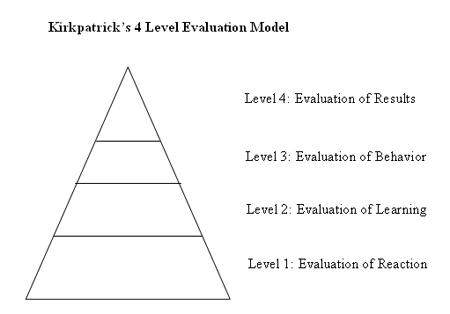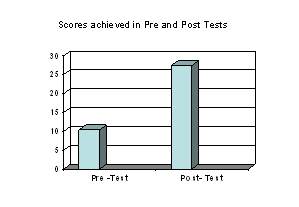|
Beyond Training to Coaching
By Zainal Abidin Rahman B Sc, ACCA, MA (HRD)
It is now the in thing. Any respectable CEO or
manager ought to hire one. Over the past 20 years, the
profession called executive coaching has become more and
more in demand. What drives it? Answer: the race to be
better in the business and corporate world. After all it
was derived from its sports cousin, which is to help
athletes run faster, jump higher, endure longer, etc.
And what drives the need to be better in the business
and corporate world? Answer: in one word - competition.
Is competition going to ease off in the future? Answer:
well you know the answer. And you do want to have that
competitive edge over your rival, don’t you? (Sorry I
can’t resist going ericksonian there.)
Coaching succeeds where training fails. Training can
provide you with the depth and breath and even insight
in any field. But training seldom can help you with the
two things that you most need for executive success:
focus and execution. This is plainly true with all the
conflicting and confusing demands made on the modern
executive. Once the training is over, most of the new
learnings are forgotten while the executive engages in
fire -fighting in the trenches using the same old tools.
Pfeffer and Sutton in their book The Knowing-Doing Gap
quoted a study done by Prof Zbaracki of Chicago
University on TQM training conducted in five
organizations. Senior managers in these organizations
had believed that the TQM training would help their
employees enhance the quality of their products and
services. Zbaracki found that the TQM methods were not
used at all in four of the five organizations and only
on a very limited way in the fifth. Pfeffer and Sutton
found this lack of implementation prevalent in other
fields of training as well.
Let’s consider further how training has mainly fail
organizations through examining how training
effectiveness are evaluated.
A common tool to assess the training effectiveness is
called the Kirkpatrick Evaluation Model. In this model,
here represented as a pyramid, evaluation always begin
with level 1, and then move sequentially through levels
2, 3, and finally 4. Information from each prior level
serves as a base for the next level's evaluation. Thus,
each successive level represents a more precise measure
of the effectiveness of the training program, but at the
same time requires a more rigorous and time-consuming
analysis
Level 1 Evaluation of Reactions
Evaluation at this level assesses how the participants
react to the training. The evaluation attempts to answer
questions such as:
• Did the participants enjoy the training?
• Was the material relevant to their work?
This type of assessment is often called a reaction or
“smile-sheet” evaluation. On completion of the training,
participants are given a sheet of paper on which they
are asked to tick off their reaction (often on a scale
of 1 to 5 or more creatively on a series of frowning to
smiling faces) on aspects of the training such as
• Duration of training
• Relevance of contents
• Clarity of the instruction
• Knowledge level of the trainer (unbelievable and
impossible as this may sound)
• Whether trainer could retain their interest (often
interpreted whether trainer told jokes)
• Drinks and other refreshments
• Logistics
Many trainers in trying to obtain positive evaluation
focus much on the entertainment value of the training,
frequency at the expense of real contents and skills,
especially if these entail much practice and drills.
They dub this as “edutainment” which revolves around
jokes and funny games. When well balanced between
edutainment and contents, such trainings may be
beneficial with long-lasting effects. Of more dubious
value are activities which are remotely relevant to the
real corporate world, for example, trainings which
involve outdoor games and rope activities or even such
challenges as “fire walk” or walking on broken glasses
or on nails. Trainers in these fields often tout the
line that “if you can walk on fire you can do anything
in life.” Oops! I don’t think so. While walking on fire
may boost personal motivation, the skills involved
couldn’t be more different. Walking on fire, especially
after a few hours of psyching from the trainer, demands
different skills than, say, organizing an efficient
hectic and understaffed office or counseling a
persistent latecomer or maintaining a marriage.

Nevertheless, the participants' reactions have important
consequences for training evaluation at Level 2.
Although a positive reaction does not guarantee
learning, a negative reaction is likely to reduce its
possibility. Most management takes the view that if the
employees don’t enjoy the training why go on with it?
Level 2 Evaluation of Learning
Evaluation at Level 2 moves the assessment beyond
learner satisfaction and attempts to measure the extent
participants have improved in their skills and
knowledge. Measurements at this level are obviously more
tedious than at Level 1. Measurement methods can range
from formal to informal testing to team assessment and
self-assessment. Often, participants are required to
take a test before the training (pretest) and the same
or a similar test just after the training (post test) to
determine the amount of learning that the training has
generated. The chart below illustrates a Level 2
evaluation:

Any increase shown in the chart measures the increase in
knowledge and skills of the participants arising from
the training. Many senior managers when shown such a
chart as above will (wrongly) conclude that the training
expenditure has been justified. While the test results
may prove that the participants have been attentive in
class and have learned they do not indicate that the
trainees will apply the new knowledge and skills back on
the job. That’s the domain of attitude which cannot be
evaluated by any pen and paper test.
Level 3 Evaluation of Behavior
Evaluation at this level assesses the changes in
participants’ behavior on the job arising out of the
training. The evaluation attempts to answer the question
–
• Are the newly acquired skills, knowledge, actually
being used in the everyday work of the participants?
When there is a change in the behavior of participants
back at their jobs, that’s well and good. But one cannot
always assume that this change was due to the training.
There could have been other extraneous intervening
factors such as a recent salary increase or the
participant was in a buoyant mood from a recent marriage
or a thousand and one other possible reasons. All these
possibilities need to be cancelled out if we are to
honestly judge whether the training has made the
difference.
Level 4 Evaluation of Business Results
This is the final level of evaluation to assess the
impact of the training on the operations of the
sponsoring organization. Even where the participants
have changed their work behavior back at the job because
of the training, this does not necessarily translate
into an improvement in business results. This is the
bottom line or true return on investment of the training
in terms that managers can understand: The most common
bottom line or indicators of business results in most
organizations are:
• Increased production
• Improved quality
• Decreased costs
• Reduced frequency of accidents
• Increased sales
• Increased profits
Ideally over time, the sponsoring organization can draw
an ROI chart against the training budget such as the one
below:

What can we conclude from the Kirkpatrick Model? The
depressing answer is that training is quite an
unreliable tool for improving business results. There
are too many variables which are outside the control
separately of the trainer, the trainees and even the
management that may sabotage achieving the business
results. Even if the participants love the training,
they may not learn anything new; even if they learn
something new this may not translate into an improvement
in their behavior and skills; and even if behavior and
skills show improvements they do not necessarily
translate into improvement in business results. Training
does not address the problems or factors that make
changing people mindsets such a challenging task. At
best, training can be seen as a blunt tool to achieve
its results. And perhaps the improvements could be
through an indirect route. Companies that spend heavily
on training are deemed to be caring and therefore better
employers and this perception in turn attracts better
employees.
Many managers know this but have no choice because the
hard truth is that there is no alternative to training
(until now as I will proceed to explain later). That’s
why all the premier companies spend between 3-5 % of
their operating budget on training, knowing fully well
that the money will not give back the same return as a
similar investment on fixed assets such as a new plant
or machinery. In the 1980s, with the widespread
introduction of computers, many in the HRD industry were
expecting computerized – based training (CBT) would take
over most if not all of the instructor - lead training.
While CBT did make some headway with academic and simple
drills instructions, they have had no impact on adult
skills relevant for people to people interactions. For
this human intervention is still essential.
Coaching provides the human touch that’s lacking in CBT
and the execution that’s lacking in traditional
training. Coaching can complement as well as supplement
training. Coaching can in fact even revolutionize
training. No longer do participants have to sit in long
dreary trainings at a stretch. Trainings can be
considerably shortened to cover the essential theories
after which coaching kicks in for 3 – 6 months (or
longer) of weekly 45 minutes scheduled (face to face or
telephone) appointments.
Coaching gets results fast because the appointments are
about what the trainee wants to improve in his or her
work performance which directly impacts the business
results. It also gets the trainee to agree to follow up
on what they have learned in the classroom. The trainee
will have to account for that agreement to the coach at
the next meeting. There is a contractual obligation that
the trainee (now called a coachee) has to make periodic
report on what he or she has done to impact the
performance of the sponsoring company. The coach will
usually begin the first coaching session with the
question “With the new insights that you have learned,
could you list out three to five things that you could
do that will make the greatest impact on your
performance and hence the results of the company?”
That’s bypassing levels 1 to 3 and going direct to level
4 of the Kirkpatrick evaluation model - the heart of the
ROI of training. As a warm up, the coach may ask
questions such as “What did you like about the
training?; or “What did you learned?; or even “How did
you get along with the instructor? However, these
questions are just for building rapport and not why the
coach is there with the coachee. He is there to help the
coachee achieve the three to five things that will make
the greatest impact on their performance and hence the
performance of the company within the next two months.
Coaching is the precision tool companies have been
looking for to improve their business results.
|
Zainal is a
business trainer and coach specializing in
personal and organizational change. He has
worked with thousands of clients, individuals
and corporate, and brings with him expertise in
OD, HR, NLP, ericksonian hypnosis, Solutions
Focus, Appreciative Inquiry, The Enneagram,
energy psychology and various other effective
modalities that create change at the personal
and corporate levels. Contact:
zainal@competencestrategies.com.sg. |
For reprint permission, please email
zainal@competencestrategies.com.sg.
[ top ]
|